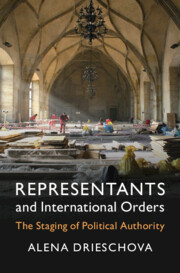Book contents
- Representants and International Orders
- Lse International Studies
- Representants and International Orders
- Copyright page
- Dedication
- Contents
- Figures
- Tables
- Acknowledgements
- Part I
- Part II Introduction: From Universal Monarchy to Territorial Balance of Power
- 3 Monarchia Universalis: From Ordering Principle to Threat of Order
- 4 From International Hierarchy to Balance of Power
- 5 Territory as a Power Resource
- Part III
- Field Notes
- Interviews
- References
- Index
3 - Monarchia Universalis: From Ordering Principle to Threat of Order
from Part II - Introduction: From Universal Monarchy to Territorial Balance of Power
Published online by Cambridge University Press: 15 May 2025
- Representants and International Orders
- Lse International Studies
- Representants and International Orders
- Copyright page
- Dedication
- Contents
- Figures
- Tables
- Acknowledgements
- Part I
- Part II Introduction: From Universal Monarchy to Territorial Balance of Power
- 3 Monarchia Universalis: From Ordering Principle to Threat of Order
- 4 From International Hierarchy to Balance of Power
- 5 Territory as a Power Resource
- Part III
- Field Notes
- Interviews
- References
- Index
Summary
In the Middle Ages kingdoms could nominally reach very far, although kings typically did not have more resources than the most powerful feudal lords. Their mystical, sacred power ensured their right to rule over vast lands. The king obtained these attributes during the coronation, during which he simultaneously had to subjugate himself to the pope and the emperor. The coronation was an anchoring representant that enacted the God-given hierarchy in the cathedral: the laity was in the nave, the king in between the laity and the clergy, and the archbishop as the representative of the pope performed the unction with the holy balm through which the sacred entered the ceremony. It was the universal monarchy on stage. To rid themselves of papal and imperial superiority, while simultaneously maintaining their standing above feudal lords, kings modified the coronation and adapted other representants. This fundamental struggle led to a change in the early modern European order. During the Reformation, iconoclasms destroyed Catholic representants that upheld the hierarchical order. Simultaneously, kings adapted and repurposed existing Catholic representants for their own needs. The resulting dynastic divine right absolutism resembled the authority of pope and emperor, but it was territorially constrained.
Keywords
Information
- Type
- Chapter
- Information
- Representants and International OrdersThe Staging of Political Authority, pp. 69 - 112Publisher: Cambridge University PressPrint publication year: 2025
